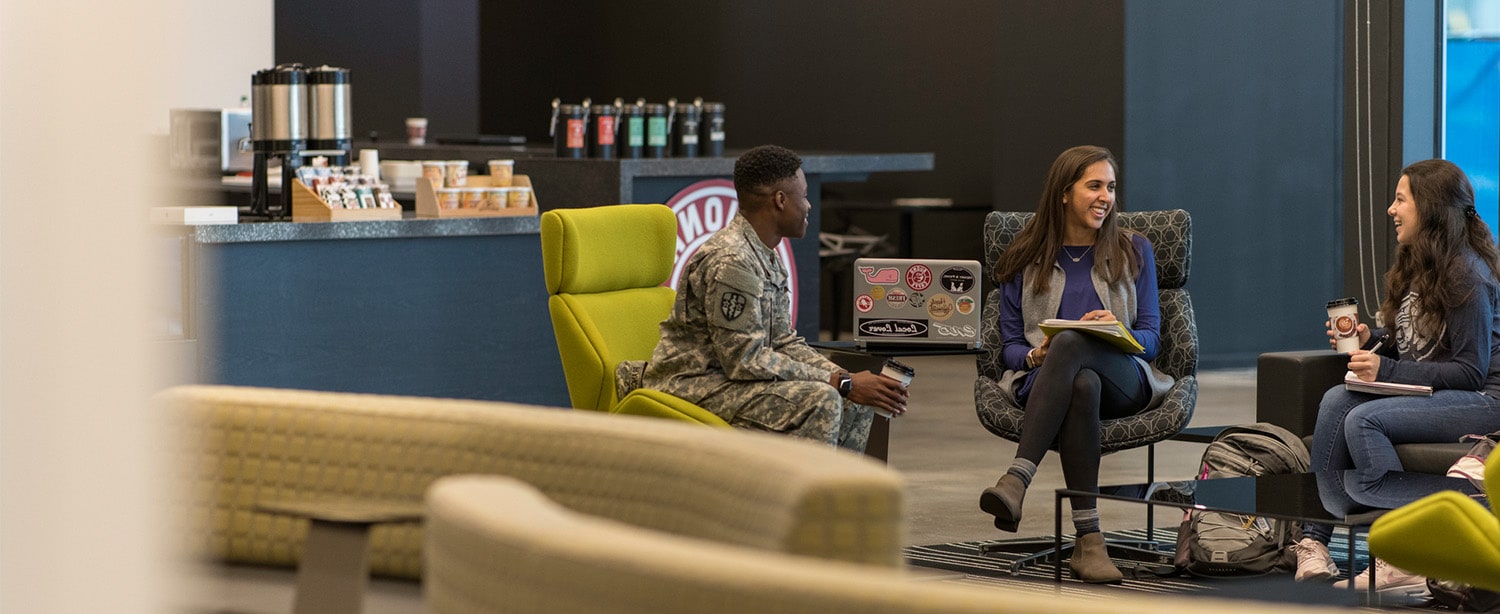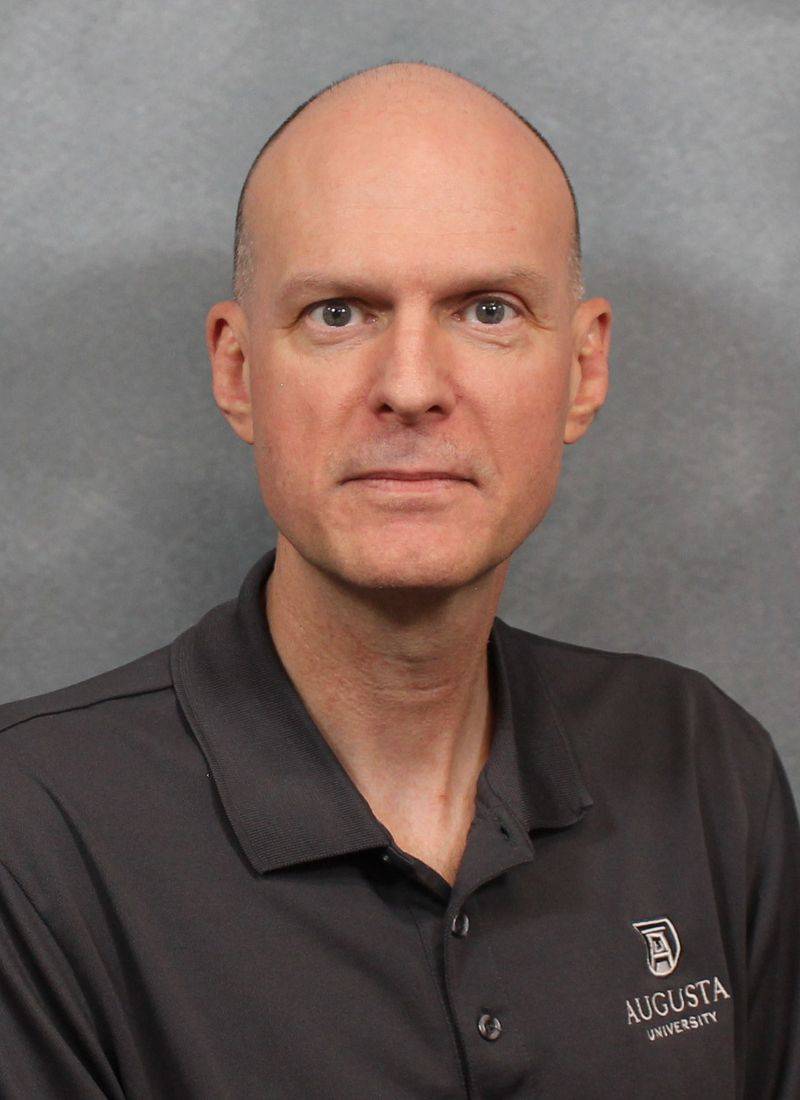Creativity, Discovery, Engagement
Learning Like No Other

- Augusta University
- Science & Mathematics
- Physics and Biophysics
- Seminar Series
Materials Science and Biophysics Research Seminar Series
Stay up-to-date on the latest research and build relationships with academics at the Materials Science & Biophysics Seminar Series, which bring experts from around the world to campus to discuss their recent findings. Everyone is welcome!
Fall 2025 Seminar Series
|
Electromagnetism in Isotropy Broken MaterialsFriday, September 26, 2025 Health Sciences Building EC 1218 2:00 - 3:00 PM Host: Dr. Trinanjan Datta (tdatta@augusta.edu) Classical views of electromagnetism—fixed refractive indices, perpendicular rays and wavefronts, and purely transverse polarization—must be reexamined in the context of anisotropic and bianisotropic media. Metamaterials with broken isotropy give rise to new electromagnetic behaviors, including direction-dependent refraction, non-orthogonal ray-wavefront alignment, and longitudinal polarization effects. These developments also tie into the Abraham–Minkowski controversy over electromagnetic momentum in materials—an open question in modern physics. I will present how this evolving theory supports innovative research projects in novel materials, biomedical sensing, space magnetoplasma waves, and axion electrodynamics. I will also introduce a new solution method for Maxwell's equations in anisotropic media: the “Om” ॐ-potential approach. |
|
|
Confusing Neural Networks in Simulational PhysicsFriday, October 24, 2025 Health Sciences Building EC 1218 2:00 - 3:00 PM Host: Dr. Trinanjan Datta (tdatta@augusta.edu) With the increasing pace of AI developments in corporate labs, questions about the future of academic groups in this field become louder. The most striking example in recent years might be AlphaFold, a machine-learning model that predicts the 3D protein structure from its amino-acid sequence and largely outperforms decade-long research in academia. This has led people to ask questions like “Are we (computational physicists) out of a job now?” Although understandable, I think this sentiment is too pessimistic. In this talk I willpresent two of our recent, student-led research projects where we use machine-learning tools and methods to analyze and inform conventional, statistical computer simulations. One of them is based on us purposely confusing neural networks, the other uses a quite confusion. |
|
|
Natural Antimicrobials for Prevention of Healthcare-Associated InfectionsFriday, October 31, 2025 Health Sciences Building EC 1218 3:00 - 4:00 PM Host: Dr. Mustafa Culha (mculha@augusta.edu) Current research of our group focuses on discovery and development of natural antimicrobials for prevention of healthcare-associated infections. In different projects, we target various types of pathogens, including bacteria, spores, viruses, fungi and parasites. In this presentation I will discuss some of our currently active projects: Development of a natural, long-lasting disinfectant . Currently used surface disinfectants provide high-level activity over a relatively short period of time, typically less than 4 hours. We developed a novel film-forming disinfectant based on chitosan, alcohol, and a natural antimicrobial oil, which is slowly released from the coating providing complete protection form microbial contamination for up to 72 hours. Our formulation is superior to currently available long-lasting disinfectants and is expected to provide longer and higher quality protection of environmental surfaces while requiring less frequent applications. Antimicrobial coatings for surgical implants . Problems facing the development of antimicrobial coatings on orthopedic implants and specifically on the pins also known as Kirschner wires include poor adhesion of drug-eluting layer, which is easily removed by shear forces during the implantation. To address this problem, we developed a natural chitosan coating that showed strong adhesion to metal implants and remained undamaged after application of strong shear forces. The significance of this research is underscored by the fact that Kirschner wires have high infection incidence ranging from 20 to 100% depending on the duration of the implantation. Natural hand sanitizer efficient against Clostridioides difficile spores . C. difficile is a pathogen that causes hundreds of thousands of healthcare associated infections and tens of thousands of deaths each year, often spreading through healthcare workers' hands. Current hand sanitizers do not protect against these infections due to resistance of C. difficile spores to ethanol. We recently discovered a natural oil that kills its spores effectively. Our goal is to isolate the active ingredient in this oil and develop a safe, effective hand sanitizer to stop its spread. Association of Candida Krusei with autoimmune disease . Autoimmune diseases impact hundreds of millions of people globally; however, the factors that trigger development of autoimmune disease are not well understood. This study explores the association between autoimmune disease and a rare eucaryotic pathogen, Candida krusei, which was discovered in a preliminary study. Gaining a clearer understanding of this relationship may shed light on how autoimmune diseases manifest and pave the way for improved therapeutic strategies.
|
|
|
Security Within Uncertainty: How Quantum’s Probabilistic Nature Provides SecurityFriday, November 7, 2025 Health Sciences Building EC 1218 2:00 - 3:00 PM Host: Dr. Trinanjan Datta (tdatta@augusta.edu) This talk provides the audience with an introduction to the world of quantum mechanics, delving into the application of the foundational tenets of quantum physics in QKD. These principles, including superposition, quantization, and the no-cloning theorem, guarantee cryptographic security for information exchange. We will explore how the laws of quantum are the building blocks of QKD and discuss the ways in which QKD can be implemented within the spheres of digital information exchange and cybersecurity. Lastly, the talk will outline the need for security with IoMT (Internet of Medical Things) devices, specifically devices within the healthcare industry. Perhaps the weakest link within a healthcare organization's security is the resource-constrained IoT devices which have little to no protection due to lack of processing power. My research aims to address and remedy this widespread problem through the novel design of an architecture for a QKD network, tailored to secure information flow between IoT devices and healthcare facilities.
|
|
 Amani Jayakody, PhD, Assistant Professor of Physics
|
Perovskite SrCoOx - Surprising Structural and Magnetic BehaviorFriday, November 14, 2025 Health Sciences Building EC 1222 2:00 - 3:00 PM Host: Dr. Trinanjan Datta (tdatta@augusta.edu) The concept of electronic phase separation explains several unusual magnetic and electronic properties of doped perovskite oxides such as cuprates, manganites, and cobaltites. The electronic phase separation observed in La1-ySryCoOx is an important example of the type of magnetic phases that can coexist, although there is an ongoing discussion as to the role of chemical segregation. Hole doping of this system can be achieved by substitution of Sr2+ for La3+ while keeping the full oxygen stoichiometry. An alternative way to do the same hole doping is to vary the oxygen concentration of the perovskite system. Strontium cobalt oxide with varying oxygen concentration (SrCoOx, 2.875 < x < 3) is one of the systems which shows magnetic phase separation for intermediate oxygen values. The end points are SrCoO2.875 which is ferromagnetic with Tc=220 K and SrCoO3 which is also ferromagnetic but with Tc=280K. Samples with intermediate values of oxygen concentration show two phase magnetic behavior between these values. Initial lab-based x-ray diffraction indicated that these compounds had only a single crystalline phase despite the two-part magnetism. We undertook a combined study using both high resolution x-ray powder diffraction measurements and pair distribution function measurements in order to understand possible differences between local and average structures. SrCoO3 remains in the simple cubic perovskite structure from 10–300 K. SrCoO2.875 has a much more complicated structure. At room temperature, it is tetragonal with an expanded unit cell. Upon cooling, the structure appears to undergo a second order transition to a cubic phase: i.e. a higher-symmetry phase at low temperature. This is extremely unusual, the opposite of typical structural transitions, and violates the usual assumption that entropy dominates the free energy changes with temperature in structural phase transitions. I present these structural studies and discuss their implications. |
|
Seminar Series Organizers
- Dr. Trinanjan Datta - tdatta@augusta.edu
- Dr. Shaobin Miao - smiao@augusta.edu
- Dr. Mustafa Culha - mculha@augusta.edu
- Dr. Amani Jayakody - ajayakody@augusta.edu
- Stephanie A. Huguenin, M. A. - sthuguenin@augusta.edu
Seminar series sponsored by: Augusta University Research Institute, College of Science and Mathematics, Department of Physics and Biophysics
Support Science & Mathematics
Give Today
Your gift to the College of Science and Mathematics endorses and supports the learning experience at the CSM. Join us in training and educating the leaders and researchers of tomorrow.
Gifts are tax-deductible to the extent allowed by law, less the fair market value of the benefits received. The CARES Act which became law on March 27, 2020, may enhance the tax deductibility of your gift. Please consult with your tax advisor.



